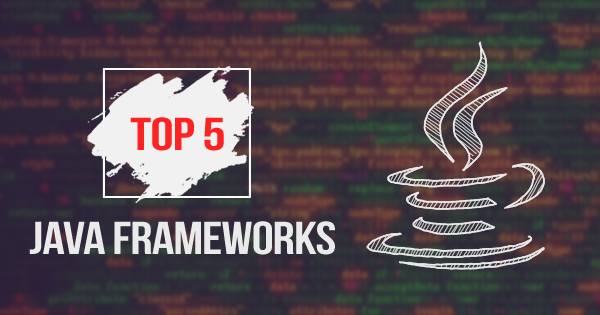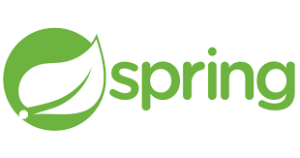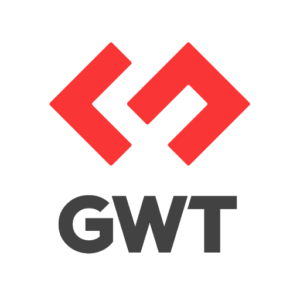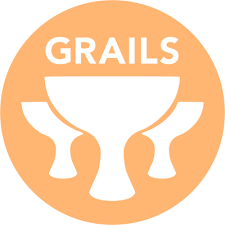The popularity of Java as one of the most versatile programming language seems to improve every year. It’s 2021, and Java is still going strong when it comes to providing programmers the tool to build enterprise-level applications. It is equally useful in developing other forms of apps including the web, windows, and much more.
There are plenty of Java frameworks out theJre. However, not all of them are perfect from what they offer. All of them have their own advantages and disadvantages. By using a framework, developers don’t have to reinvent the wheel. As a developer, you need to choose a framework that fits your requirements, not because it is the best. This is one of the most common mistakes that current developers make. In the end, your goal is to develop an app that functions and behaves the correct way.
A web framework is a solution that lets you develop web applications. It improves developer productivity by providing a structure to work around. In this article, we will explore the top Java frameworks.
Preparing for a Java interview. Read out these top 100 Java Interview Questions with the detailed answers and get ready to ace the interview.
Top 5 Java Frameworks
Java frameworks can be both front-end and backend. Backend frameworks deal with the server-side functions, whereas the front-end deals with how the frontend looks and functions. There are a number of Java frameworks that are popular, so here we’ve collected the top Java frameworks you should consider. Our top Java frameworks list takes into consideration how Java has evolved in the past few years.
The below listed are some of them are interpreted by java language program and some compiles during execution as same as regular java for exclusively improve the performances. The JVM languages are initially designed in such a way that it only supports the Programming language Java, As time passed now more languages are adapted and designed to run on the Java platform.
So, without any delay, let’s get started with the most popular Java frameworks.
1. Spring
Spring is one of the most popular Java frameworks. It is advertised as the source of modern Java that can be used to build anything including WebSocket, streaming, web, REST API’s and so on. Spring is developer-friendly and requires minimal upfront configuration. It is more than just a web framework.
Spring is a programming model that is built on top of Java. The Spring boot component ensures that the application gets up and run with minimal configuration. Other critical elements of Spring include the Spring Cloud and Spring Cloud Data Flow. Spring Cloud enables developers to utilize the Spring boot and power their innovative ideas using distributed and micro-style service cloud. This way, developers can use the latest distributed patterns using a microservices architecture. For example, you can use modules and services such as security or batch processing.
So, what are the use-cases of Spring? Companies that are trying to improve their solutions and use containers can take the advantage of Spring. It simplifies the whole component requirement and improves application uses. The Spring Data Flow also helps companies to attach processes, devices, and third-party services without any difficulty. It helps to create a unified infrastructure that works seamlessly using data microservices.
Read Spring Documentation to get more details about the Spring framework.
Pros
- Amazing community and documentation
- Good toolkit to start with.
- Can be used to write accessible and clean code.
Cons
- Can be little hard to learn
2. JavaServer Faces (JSF)
Standardization is one of the most important aspects of the current development as it enables developers to work uniformly across different platforms, and also makes it easy to debug or fix applications. JavaServer Faces is a standard that is used to build server-side user interfaces. The availability of standard APIs and tools enable the developer to create web applications seamlessly. It is specifically used to display the web user interface and is also defined in the Enterprise Edition (JEE).
JSF is quite popular among Java developers as it lets them stick to standards. It is also gaining popularity across platforms, and there is no reason not to use JSF to build standard server-side user interfaces. It helps to improve portability. Moreover, developers can later move to use JSF thanks to its extensibility feature that it has to offer.
The backend Java code can be extended using a web interface, and there is no need to refactor any of the previous code to use the framework. The component-based design also allows the use of other components and add-ons.
The JSF documentation is also well-done as it offers an in-depth showcase of how to properly use the framework.
Pros
- Oracle supported
- Excellent tools and rich libraries
- Integrated within IDE’s
Cons
- Slow development
- Steep learning curve due to the complexity
3. Hibernate
Until now, we discussed only the Java web framework. Meet Hibernate, an ORM framework that is meant to deal with database access. It lets developers have a powerful option when it comes to working with the database. It is a high-quality framework with a focus on object-relational mapping.
Object-relational mapping is useful for relating data across two incompatible systems. It is useful if you are working in a complex ecosystem and require to make data flow seamless. Hibernate can only be used with Java and this is why it is in our best Java frameworks list.
Hibernate is extremely efficient considering that it only dictates the communication between databases for transferring data. It also means that scaling is possible with hibernate, and you can code multiple databases at the same time. This is one of the most significant benefits of using Hibernate and can easily handle a massive number of users. However, it doesn’t mean that you should ignore the solution as it works similarly even with a lower number of users.
The critical components of Hibernate include the following.
- Hibernate ORM: handles domain model persistence across relational databases.
- Hibernate Search: Search feature across the domain.
- Hibernate OGM: Domain model persistence for noSQL datastores.
- Hibernate Tools: IDE plugins and command line stools that make the use of Hibernate easy.
Go through the official Hibernate Guide to know more about the Hibernate framework.
Pros
- Powerful cross-database solution
- Scalable
- Data can be converted easily
- Configurable
Cons
- Data integrity is questionable
- Takes time to restart
4. Google Web Toolkit
Google Web Toolkit (GWT) is a popular web framework that allows developers to write client-side Java code and then deploy it as JavaScript. It is open-source and completely free to use. A number of Google products such as Adwords, AdSense, Blogger, and Google Wallet have already been written with the use of Google Web Toolkit (GWT).
This Java Framework enables developers to develop and debug Ajax applications using Java programming language. It is easy for developers to create complex browser applications faster with the use of Google Web Toolkit.
GWT is among the list of best Java frameworks and is widely used to create and maintain complex JavaScript front-end applications and build progressive web applications. It is well-known for features such as history and management, internationalization, cross-browser portability, and bookmarking.
A developer should follow the GWT documentation to work with Google Web Toolkit framework.
Pros
- Developer-friendly
- Open-source and free
- Use of Google APIs
Cons
- Slow Java to JavaScript compilation
- More coding required
5. Grails
Our last pick for the top Java frameworks goes to Grails. It is a Groovy-based web application framework that enables developers to create web applications using the Groovy programming language. Also, it is open source under Apache 2 License project.
Groovy is aimed to improve developers’ productivity and uses an object-oriented language. It is dynamic language but still let developers use static-typing and static compilation capabilities. As a Java developer, you will find yourself at home as it uses similar syntax to that of Java. Groovy is one of the JVM languages and so the syntax is compatible with Java and can be compiled to JVM (Java Virtual Machine) bytecode. It is built on top of the Spring Boot and borrows the time-saving features of Spring Boot.
Learning Grails is not that hard as it has a flat learning curve. Also, it uses convention-over-configuration which makes it easy to grasp and work with. Despite being built on top of Spring Boot, it is easy to integrate with other Java features and components including JVM, Java EE containers, and so on.
Grails also work seamlessly with other technologies including React or Angular using application profiles. This means that you can build an application with a JavaScript frontend using Grails.
Grails also sport a vibrant community and hence offers tons of plugins that are managed and developed by the community. Learn how to work with the Grails framework with Grails documentation.
Pros
- Easy to use and setup
- Tons of plugins to play with
- Good documentation
Cons
- Runtime language usage is mandatory
Thinking to start a career in Java? Prepare with these top 20 Core Java Interview Questions and crack the interview in the first go.
Conclusion – Which Java Framework Should You Choose?
Java has evolved a lot in the last decade or so. With so many frameworks, you can improve development time and ensure that you build an application that works in different environments. This leads us to our next question, which one should you choose? As a beginner, you should select the one that fits your requirement and is easy to learn.
Once you feel comfortable, then you can try out other frameworks and decide it for yourself. The choice of the framework also depends on your experience. If you have good experience working with Spring Boot, then Grails can be an excellent pick for your next project. In the end, this is only you who have to decide which framework to pick based on multiple factors including features, ease-of-use, documentation, support, and so on.
So, choose the right framework as per your requirements and have a bright development career. You can also get a certification to validate your Java development skills. Join our Oracle Java certifications training and become a certified Java developer.
- Top 45 Fresher Java Interview Questions - March 9, 2023
- 25 Free Practice Questions – GCP Certified Professional Cloud Architect - December 3, 2021
- 30 Free Questions – Google Cloud Certified Digital Leader Certification Exam - November 24, 2021
- 4 Types of Google Cloud Support Options for You - November 23, 2021
- APACHE STORM (2.2.0) – A Complete Guide - November 22, 2021
- Data Mining Vs Big Data – Find out the Best Differences - November 18, 2021
- Understanding MapReduce in Hadoop – Know how to get started - November 15, 2021
- What is Data Visualization? - October 22, 2021







Great article! Though I don’t know about the framework but you gave good information on java framework
you mention pros and cons of framework which i found really good